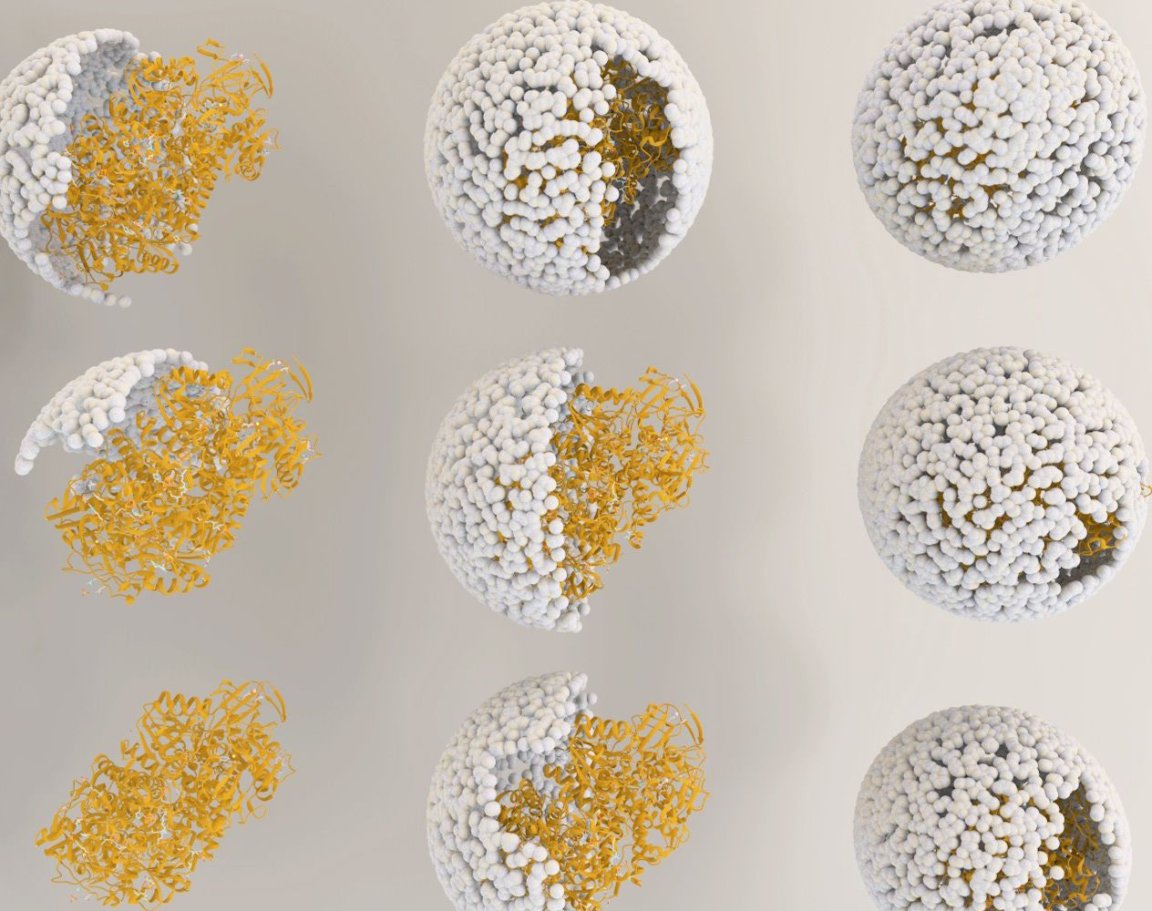
IMPROVING ON HYDROGEN PRODUCTION
Indiana University scientists have created a “nano-reactor” by modifying a virus to protect and encapsulate an enzyme that breaks down H2O into hydrogen and oxygen. The results of this process, which were published in the journal Nature Chemistry, demonstrate that the enzyme is strengthened by this protection, making it 150 times more efficient than its unaltered form.

“Essentially, we’ve taken a virus’s ability to self-assemble myriad genetic building blocks and incorporated a very fragile and sensitive enzyme with the remarkable property of taking in protons and spitting out hydrogen gas,” said Trevor Douglas, who led the study, in the IU Bloomington press release. “The end result is a virus-like particle that behaves the same as a highly sophisticated material that catalyzes the production of hydrogen.”
The biomaterial, named “P22-Hyd”, combines the capsid or the protein shell of a virus known as bacteriophage P22 and the enzyme NiFe hydrogenase.
The enzyme is produced by combining the genes hyaA and hyaB in the common bacteria Escherichia coli. It is produced through a simple fermentation process at room temperature that can prove to be far more environmentally friendly and less costly compared to other catalyst materials like platinum.
Unlike its unaltered form, P22-Hyd is capable of resisting degradation from chemicals in the environment and is able to act as a hydrogen production catalyst or as a fuel cell catalyst depending on the circumstances. These qualities allows its potential use in manufacturing and hydrogen fuel cells in cars.
ACCELERATING RENEWABLE SOURCES
Considering that automobile makers are now shifting away for gasoline and diesel to renewable sources such as hydrogen fuel or electric batteries, this could be great benefit.
The resulting biomaterial, called P22-Hyd, is said to not only be more efficient—it can also easily be produced using a simple fermentation process, and it can all be done at room temperature. Douglas notes the difference, saying, “This material is comparable to platinum, except it’s truly renewable. He continues, “you don’t need to mine it; you can create it at room temperature on a massive scale using fermentation technology; it’s biodegradable. It’s a very green process to make a very high-end sustainable material.”